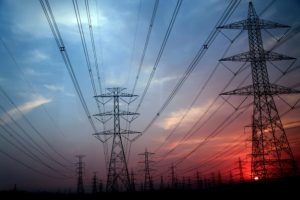Government agrees new subsidies deal for Drax Power Station

The Government has signed off on a new subsidy arrangement with North Yorkshire’s Drax Power Station.
The power station, which creates energy by burning wood pellets, has received billions of pounds from the Government and bill-payers because burning these pellets – or biomass – is classified as renewable energy.
Drax’s agreement with the Government will run from 2027 to 2031. It will see the power station used as a back-up to cheaper renewable sources of power.
The Government’s Department for Energy Security and Net Zero (DESNZ) says consumers will save £170m per year under the new deal.
Its projection is based on the halving of the North Yorkshire power station’s Government subsidy over 2027 to 2031.
DESNZ explains Drax will only provide electricity when it is really needed, compared to current generation of around two-thirds of a year.
Drax is paid to generate energy using wood that must be 70% sustainable. But this sustainability figure will rise to 100% by 2027 under the new agreement.
Drax already generates using 100% sustainable biomass, so the agreement is designed to tighten the regulations.
Drax Group CEO, Will Gardiner, said: “The Government’s low-carbon dispatchable CfD (contracts for difference) framework for biomass, announced today, is an investment in UK energy security, which will result in a net saving for consumers and support the delivery of Clean Power 2030.
“Analysis from Baringa indicates the proposed agreement will result in a £1.6-3.1bn reduction in electricity system costs, versus the construction of new fossil fuel power stations, and Government has concluded today that Drax offers the lowest cost option for bill payers during this period.
“Drax Power Station is the UK’s largest power station and provides secure capacity equivalent to over 80% of Hinkley Point C.
“The power station plays a critical role in UK energy security, providing around 10% of all UK renewable energy and over 50% at certain times of peak demand, with enough reliable power for five million homes – equivalent to every home in London, or Wales and Scotland combined.
“Under this proposed agreement, Drax can step in to increase generation when there is not enough electricity, helping to avoid the need to burn more gas or import power from Europe, and when there is too much electricity on the UK grid, Drax can turn down and help to balance the system.”








